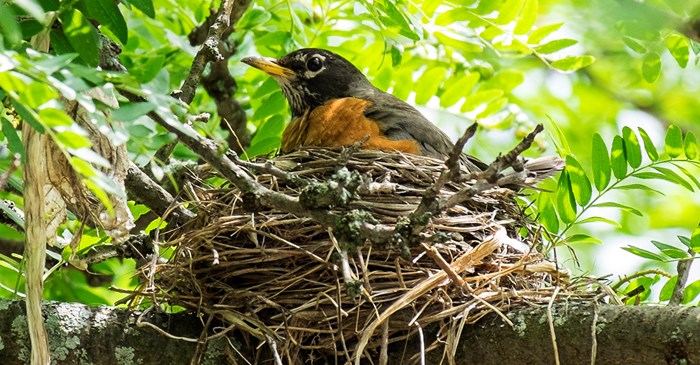As you hear the call of the baby birds from their nests, you may wonder what is going on with the bird couples who are taking care of them.
Here are some answers to commonly asked questions about bird mating:
Do they change mates?
On the surface, yes. About 90 percent of bird species pairs may stay together through a nesting season, but it’s not uncommon for one or both to mate with others later.
How do males attract a mate?
Some males are gifted with a brightly hued plumage to help them attract the lady birds. In addition to their attention-getting feathers, males will bring food to females, and sing or drum to win their favor. Others, such as the house wren, will build a series of nests.
Who spends more time on the nest?
That depends on the species. Sometimes, both males and females take turns on the nest. Other males may spend the incubation time defending the nest and bringing food to his mate, later helping to feed the nestlings. In any case, most song birds don’t start incubating until all the eggs are laid. If you want to know the incubation and fledgling times of popular north American bird species, this list is a handy reference.
Will they return next year?
Possibly. The mortality of song birds is around 50 percent, and studies of banded migratory song birds show they return to an area to nest 20 to 60 percent of the time, according to the Cornell Ornithology Lab.
How do bird nests vary?
Nestwatch.org is a terrific resource which details nest type, habitat and nest substrate for common nesting birds. Their site listings include images of the bird eggs and nests, plumage details to help you distinguish between males and females, and recordings of mating songs.
Keep those feeders filled, even in the summer when insects and plants are plentiful. Birds who are feeding nestlings can always enjoy the nutrition and protein source. Choose from a wide assortment of high-quality, nutritious blends of seeds and nuts offered by Lyric Bird Food.
